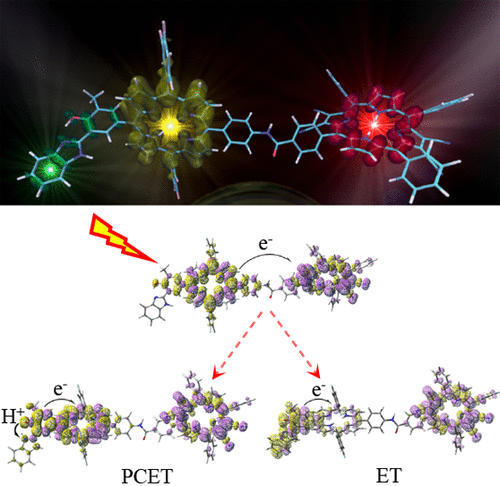Electronic coupling in the reduced state lies at the origin of color changes of ommochromes
Dyes and Pigments
DOI: 10.1016/j.dyepig.2020.108661
In the colorful world of pigments and dyes, the chemical reduction of chromophores usually leads to bleaching because of π-conjugation interruption. Yet, the natural phenoxazinone-based ommochrome pigment called xanthommatin displays a bathochromic (i.e. red) shift upon two-electron reduction to its corresponding phenoxazine, whose electronic origins are not completely disclosed. In this study, we investigated, at quantum chemical level, a series of phenoxazinone/phenoxazine pairs that was previously explored by UV–Vis spectroscopy (Schäfer and Geyer, 1972), and which displays different hypsochromic and bathochromic shifts upon reduction. Density Functional Theory (DFT) and Time Dependent DFT (TDDFT) have been applied to compute their optical properties in order to find a rational explanation of the observed photophysical behavior. Based on our results, we propose that the electro-accepting power of auxochromes and their conjugation facilitate intramolecular charge-transfers across the phenoxazine bridge by lowering unoccupied molecular orbitals via electronic and geometric couplings, leading ultimately to bathochromy. Our findings therefore suggest new potential ways to adjust the color-changing ability of phenoxazinones in technological contexts. Overall, this model extends our mechanistic understanding of the many biological functions of ommochromes in invertebrates, from tunable color changes to antiradical behaviors.





